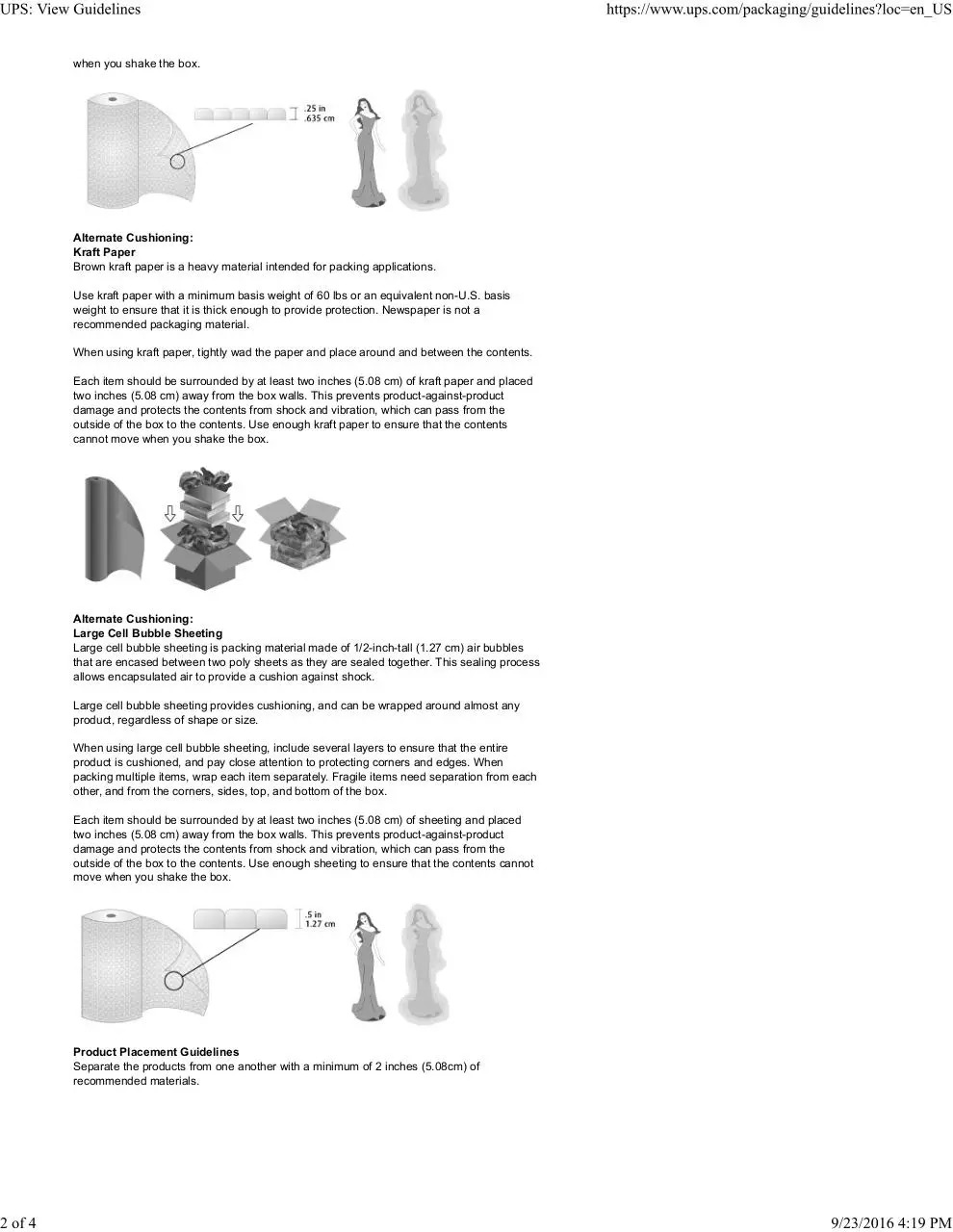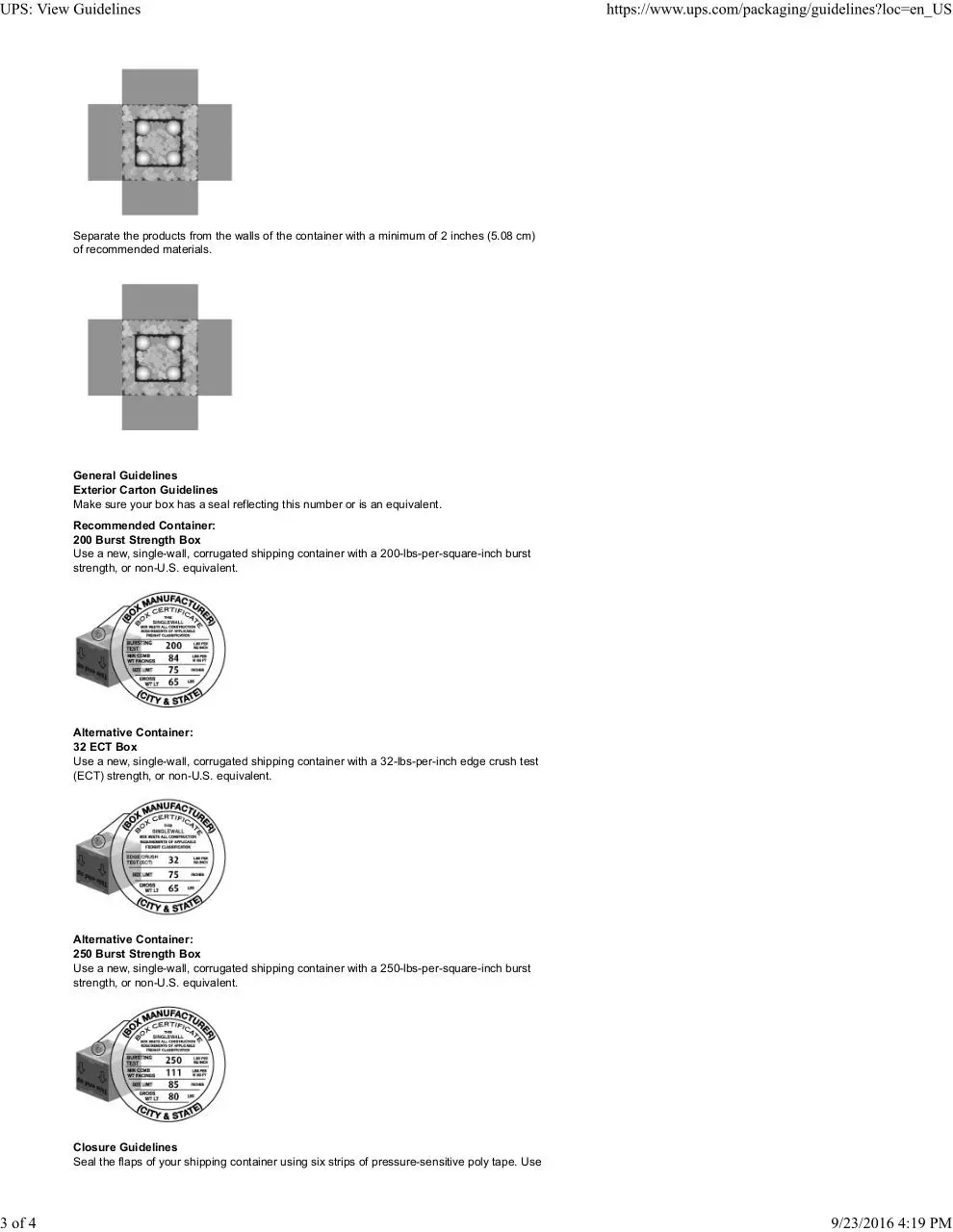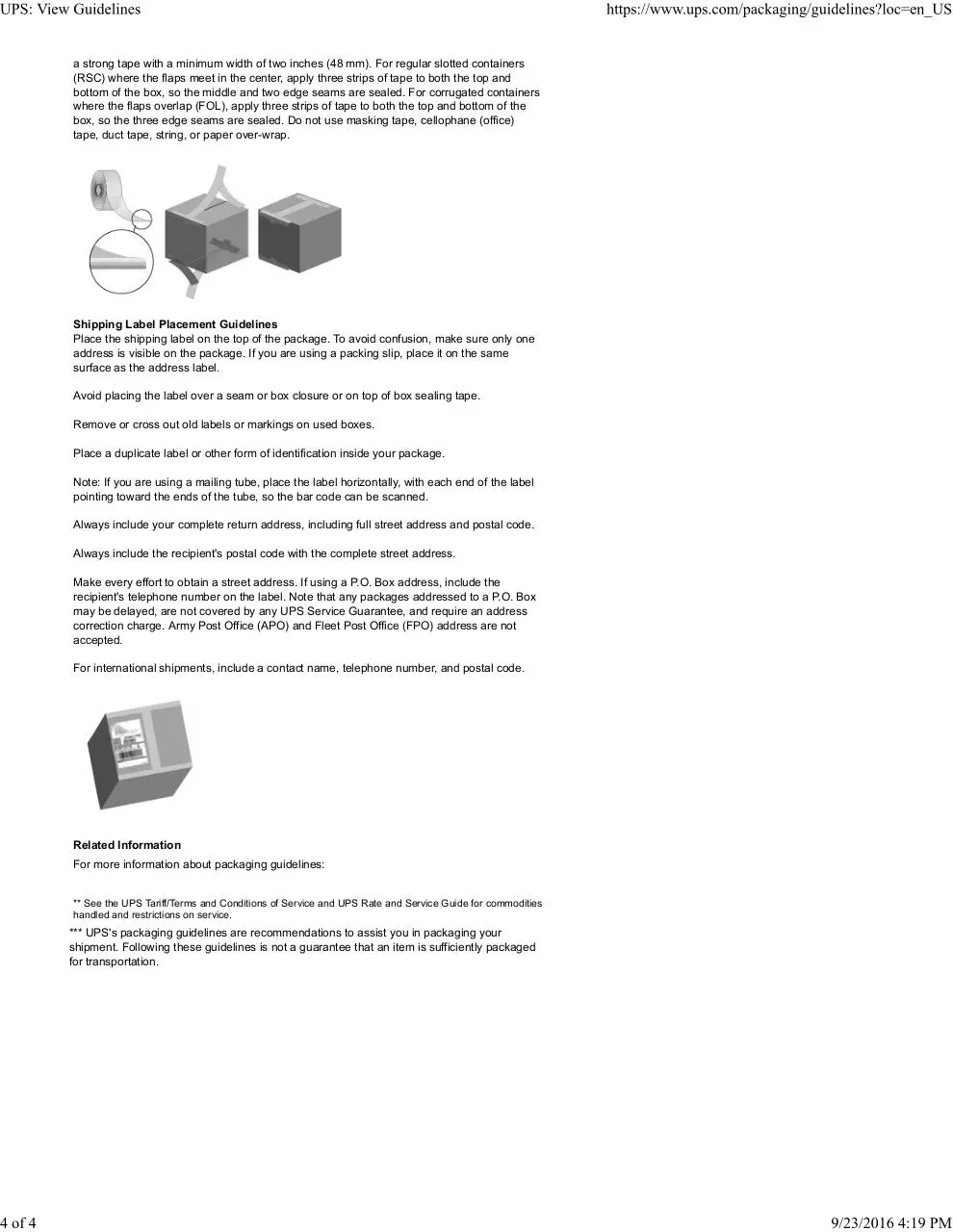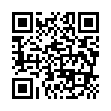UPS View Guidelines (PDF)
File information
This PDF 1.7 document has been generated by / Foxit PhantomPDF Printer Version 7.3.4.0308, and has been sent on pdf-archive.com on 24/09/2016 at 01:31, from IP address 24.234.x.x.
The current document download page has been viewed 279 times.
File size: 272.52 KB (4 pages).
Privacy: public file




File preview
These guidelines provide packaging suggestions for the merchandise categories you
selected.
Packaging Details
Dimensions (Length x Width x Height): 20 x 20 x 9 inches
Weight: 15 lbs.
Guidelines for your merchandise, including:
Consumer Electronics
Requirements for Packaging Batteries and Devices With Batteries
Protecting Battery Cells
Packaged batteries or cells must be separated in a way to prevent short circuits and
damage to terminals.
Protect against short circuit by:
Packing each battery or each battery-powered device in a fully enclosed inner package
made of non-conductive material, such as a plastic blister pack or plastic bag.
Separating or packing batteries vertically, or side by side to prevent contact with other
batteries, devices or conductive material (i.e. metal) in the packaging
Protecting Battery Terminals
If the outer package is not impact-resistant, it should not be used as the sole means of
protecting the battery terminals from damage or short circuit. Batteries should be securely
cushioned and packed to prevent them from being crushed or from shifting while in
transport, which could loosen terminal caps or reorient terminals, producing a short circuit.
Protect your terminals by:
Ensuring that exposed terminals or connecters are protected with non-conductive caps,
non-conductive tape or by other appropriate means
Packing the battery in rigid plastic packaging
Constructing the battery with recessed terminals or otherwise protecting the terminals
so they will not damage if the package is dropped
Preventing Fires
Any device with installed batteries must be turned off during transport. Protect switches that
can be accidentally activated, or remove the batteries and protect the terminals.
Several types of batteries may be regulated as hazardous materials in transportation. Learn
more about shipping batteries by selecting the link below.
Shipping Batteries or Devices with Batteries
Interior Cushioning Guidelines
Recommended Cushioning:
Small Cell Bubble Sheeting
Small cell bubble sheeting is packing material made of 1/4-inch-tall (0.64 cm) air bubbles
that are encased between two poly sheets as they are sealed together. This sealing process
allows encapsulated air to provide a cushion against shock.
Small cell bubble sheeting provides surface protection and scuffing resistance. It also
provides good cushioning for lightweight items and can be wrapped around almost any
product regardless of shape or size.
When using small cell bubble sheeting, include several layers to ensure that the entire
product is cushioned, and pay close attention to protecting corners and edges. When
packing multiple items, wrap each item separately. Fragile items need separation from each
other, and from the corners, sides, top, and bottom of the box.
Each item should be surrounded by at least two inches (5.08 cm) of sheeting and placed
two inches (5.08 cm) away from the box walls. This prevents product-against-product
damage and protects the contents from shock and vibration, which can pass from outside of
the box to the contents. Use enough sheeting to ensure that the contents cannot move
when you shake the box.
Alternate Cushioning:
Kraft Paper
Brown kraft paper is a heavy material intended for packing applications.
Use kraft paper with a minimum basis weight of 60 lbs or an equivalent non-U.S. basis
weight to ensure that it is thick enough to provide protection. Newspaper is not a
recommended packaging material.
When using kraft paper, tightly wad the paper and place around and between the contents.
Each item should be surrounded by at least two inches (5.08 cm) of kraft paper and placed
two inches (5.08 cm) away from the box walls. This prevents product-against-product
damage and protects the contents from shock and vibration, which can pass from the
outside of the box to the contents. Use enough kraft paper to ensure that the contents
cannot move when you shake the box.
Alternate Cushioning:
Large Cell Bubble Sheeting
Large cell bubble sheeting is packing material made of 1/2-inch-tall (1.27 cm) air bubbles
that are encased between two poly sheets as they are sealed together. This sealing process
allows encapsulated air to provide a cushion against shock.
Large cell bubble sheeting provides cushioning, and can be wrapped around almost any
product, regardless of shape or size.
When using large cell bubble sheeting, include several layers to ensure that the entire
product is cushioned, and pay close attention to protecting corners and edges. When
packing multiple items, wrap each item separately. Fragile items need separation from each
other, and from the corners, sides, top, and bottom of the box.
Each item should be surrounded by at least two inches (5.08 cm) of sheeting and placed
two inches (5.08 cm) away from the box walls. This prevents product-against-product
damage and protects the contents from shock and vibration, which can pass from the
outside of the box to the contents. Use enough sheeting to ensure that the contents cannot
move when you shake the box.
Product Placement Guidelines
Separate the products from one another with a minimum of 2 inches (5.08cm) of
recommended materials.
Separate the products from the walls of the container with a minimum of 2 inches (5.08 cm)
of recommended materials.
General Guidelines
Exterior Carton Guidelines
Make sure your box has a seal reflecting this number or is an equivalent.
Recommended Container:
200 Burst Strength Box
Use a new, single-wall, corrugated shipping container with a 200-lbs-per-square-inch burst
strength, or non-U.S. equivalent.
Alternative Container:
32 ECT Box
Use a new, single-wall, corrugated shipping container with a 32-lbs-per-inch edge crush test
(ECT) strength, or non-U.S. equivalent.
Alternative Container:
250 Burst Strength Box
Use a new, single-wall, corrugated shipping container with a 250-lbs-per-square-inch burst
strength, or non-U.S. equivalent.
Closure Guidelines
Seal the flaps of your shipping container using six strips of pressure-sensitive poly tape. Use
a strong tape with a minimum width of two inches (48 mm). For regular slotted containers
(RSC) where the flaps meet in the center, apply three strips of tape to both the top and
bottom of the box, so the middle and two edge seams are sealed. For corrugated containers
where the flaps overlap (FOL), apply three strips of tape to both the top and bottom of the
box, so the three edge seams are sealed. Do not use masking tape, cellophane (office)
tape, duct tape, string, or paper over-wrap.
Shipping Label Placement Guidelines
Place the shipping label on the top of the package. To avoid confusion, make sure only one
address is visible on the package. If you are using a packing slip, place it on the same
surface as the address label.
Avoid placing the label over a seam or box closure or on top of box sealing tape.
Remove or cross out old labels or markings on used boxes.
Place a duplicate label or other form of identification inside your package.
Note: If you are using a mailing tube, place the label horizontally, with each end of the label
pointing toward the ends of the tube, so the bar code can be scanned.
Always include your complete return address, including full street address and postal code.
Always include the recipient's postal code with the complete street address.
Make every effort to obtain a street address. If using a P.O. Box address, include the
recipient's telephone number on the label. Note that any packages addressed to a P.O. Box
may be delayed, are not covered by any UPS Service Guarantee, and require an address
correction charge. Army Post Office (APO) and Fleet Post Office (FPO) address are not
accepted.
For international shipments, include a contact name, telephone number, and postal code.
Related Information
For more information about packaging guidelines:
** See the UPS Tariff/Terms and Conditions of Service and UPS Rate and Service Guide for commodities
handled and restrictions on service.
*** UPS's packaging guidelines are recommendations to assist you in packaging your
shipment. Following these guidelines is not a guarantee that an item is sufficiently packaged
for transportation.
Download UPS View Guidelines
UPS_ View Guidelines.pdf (PDF, 272.52 KB)
Download PDF
Share this file on social networks
Link to this page
Permanent link
Use the permanent link to the download page to share your document on Facebook, Twitter, LinkedIn, or directly with a contact by e-Mail, Messenger, Whatsapp, Line..
Short link
Use the short link to share your document on Twitter or by text message (SMS)
HTML Code
Copy the following HTML code to share your document on a Website or Blog
QR Code to this page

This file has been shared publicly by a user of PDF Archive.
Document ID: 0000486539.